TSOTA x TRS Studio Visits is a collaboration between The State of the Arts and The Royal Standard. TRS is an artist-led gallery, studio, and social workspace in Liverpool, working with over 40 artists. Every month we will be presenting interviews and studio visits with artists working in the space and chatting to them about their practice, inspirations and what art means to them. This month, we talked to artist Lucy Archer.
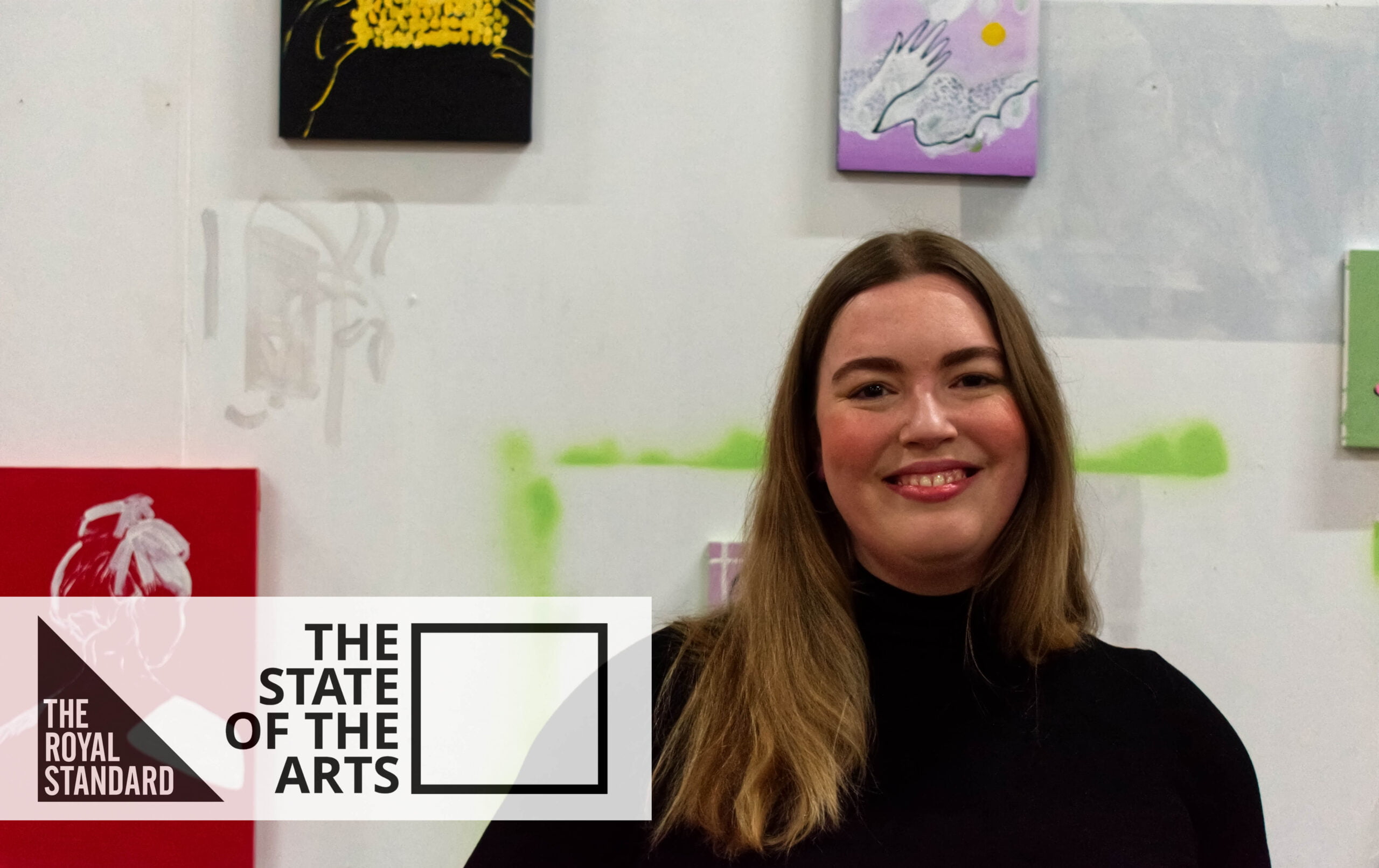
Helayna: Hi Lucy, lovely to meet you and be talking to you about your work. It’s our first TSOTAxTRS in a while and it’s nice to have this space to talk to practitioners around the North West, like yourself, and see what you’re up to.
I thought I’d begin by broadly asking about your practice. You state that your environment and surroundings influence your work, and I was wondering if moving from university in Edinburgh and now living in Liverpool has changed the way you work and the visuals you produce?
Lucy: Yes 100%, when I was at uni, completing my final year and my degree show, I’d say my primary influence was the landscape, and of merging landscape with train journeys. I looked at how this focus affected my perception of the layers and depths within the landscape; therefore, I was making quite panoramic paintings, usually, with a lot of depth.
I was using Perspex, drawing on top and kind of experimenting with the way I was installing it like leaving gaps in the wall. I definitely took a more 3D and immersive approach to painting.
So, when I moved to Liverpool, this did change as you no longer have this expansive Scottish landscape. My work made a shift, and I would say, I’ve got more concerned with interiors, and capturing more intimate snapshots into interior life. I find that windows quite often jump out at me and make an appearance in my work.
Helayna: So, the obligatory COVID question, as we must. I’m just curious how, as your work relies on this interaction with the environment, the lack of interaction during the fluctuations of COVID affected you.
Lucy: I’d say that this shift to interiors, and that I moved in with my boyfriend right in the middle of the beginning of lockdown, paired with being inside all the time, my work changed to reflect this. I started creating very domestic interior sketches and Still Lifes. We also moved into an unfurnished house and had to buy everything, so I ended up drawing everything we bought and drew every time I made my boyfriend restructure a room. Also, food was a huge, repetitive daily routine and that became a huge thing I was making art out of as well. The work that I enjoy feeds into every aspect of my life; when I’m creating a Still Life I think it does influence what I eat, what I’m making and how I’m arranging my home.
I really started looking at food and drawing as anchors in the day and how these memories and points of interest created a narrative. I would say it really affected my art.

Lucy Archer’s studio space in TRS, Liverpool.
Helayna: Yes, I was going to ask about that, because I saw a lot of fruits and food on your Instagram and was wondering where the interest came from, but now it makes sense that your work responded directly to what’s around you.
From what you’ve learnt throughout that time, did you find there were any recurring themes or topics that you’d like to continue to explore and/or expand on?
Lucy: I feel like now it’s at an interesting point where I’ve been working within this subject matter of interiors, food, memories and setups that are repeated in my life again, and again, and now I want to develop that. I think, for me, I see my work as resting in the space in between drawing and painting. And also, kind of in the space between narrative and abstraction, but I think I’d like to hone in on the slight surreal element within my work in order to leave a bit to the imagination. What I’ve found is important is repeating images throughout my work, creating an anthology of marks or motifs, to keep a thread throughout my work. So even though it does change quite a lot, I can track this change.

Helayna: So, I was wondering what you would say your process of creation is? Do you work in a sporadic way or is it quite sequential?
Lucy: Well, I can be really neurotic and methodical, so do work in a way where I’m thinking: right, this has to get done, this has to link in with this and questioning how we make these threads tie up. But, as much as I think it’s really good for me to have that mentality as a basis of making work, I’ve also had really nice moments when I’ve just played and been a bit free. I think having different avenues to go down can really freshen the work up.
Collaborating has always really helped me take blinkers off and free up a little bit, getting some different information in there and change up the sequence of things. I don’t feel like I need too much input to be able to make something but at times I really like being given an idea or being given a project and creating something new from that.
Helayna: When you speak of collaboration, does that typically come from fellow artists within the Royal Standard studio spaces, or artists further afield? How does the collaboration process work for you the way that you work?
Lucy: I think when it has been most successful has been with an intention, of when I’ve seen someone’s work and we’ve had a conversation before, been to a crit together and both seen a good visual starting point with our aesthetics or visual language. I did a collaboration exhibition called ‘Slippy Temperament’ with Talia Laing for OUTPUT Gallery in 2019. It was great because we both were looking to expand on our practices and being able to work on it in a collaborative way.

‘SLIPPY TEMPERAMENT’ Exhibition 2019. Works by Lucy Archer and Talia Laing (Credit: Gabrielle de la Puente)
Helayna: Tell me more about that exhibition: What were the themes? How did you both find working together? And how did your differing practices complement each other?
Lucy: Talia’s practice is mostly weaving, whereas mine is mostly painting, but I see mine as kind of drawing with paint. I think, initially, we both saw each other’s work and thought it would look really good together. So that’s how the conversation came about, but from there it was serendipitous. We found that we had loads of similar starting points and inspiration. Both our works had a lot of windows, and our colour palettes were really matching as well, but we wanted to develop it further from our visual similarities.
We developed initial sketches together, spoke about how our practices were primarily reactionary, both a reaction to different content, images, environments and then we began to react to each other’s work. I’d take a photo, show it to Talia and she’d create weaving in response, and it was lovely seeing her take something flat and 2D, and further abstract it into a wonderful 3D weaving. The exhibition documented this 6 month passage of time of creation, so we really liked having ‘time’ always as an influence of the whole project.

Close ups from ‘SLIPPY TEMPERAMENT’. Weaving by Talia Laing and paintings by Lucy Archer (Credit: Gabrielle de la Puente)
Helayna: How do you create a piece, from start to finish, once you’ve defined what you want to draw with paint?
Lucy: My practice requires a lot of editing and literal stripping back. It can be quite a long process for me to make a painting or usually start it. I think this is the same for everyone who makes artwork, it becomes a process of: start it, love it, spend two months ruining it, painting over half of it and then finally deciding, alright it’s done, it’s finished.
But for me, it’s very important that I leave something to be imagined. Not giving all the information. I want to give the intonation of complexity, rather than reveal it. Artist Henni Alftan wrote something really nice about how she purposefully abstracts her work and gives the least amount of visual information for the audience to decipher. I think that was really useful to me when I was kind of trying to develop my own work.
In terms of my colour palette, I think from being a child, I’ve always been a bit overly feminine, and I think that translates into the highly feminine, pastel colour palette I use and what feels most natural when I am making. Even now, whilst I’m making very interior domestic drawings and small intimate work I am realising how being a woman does affect the art I make and I’m going to try to continue to feed into it.
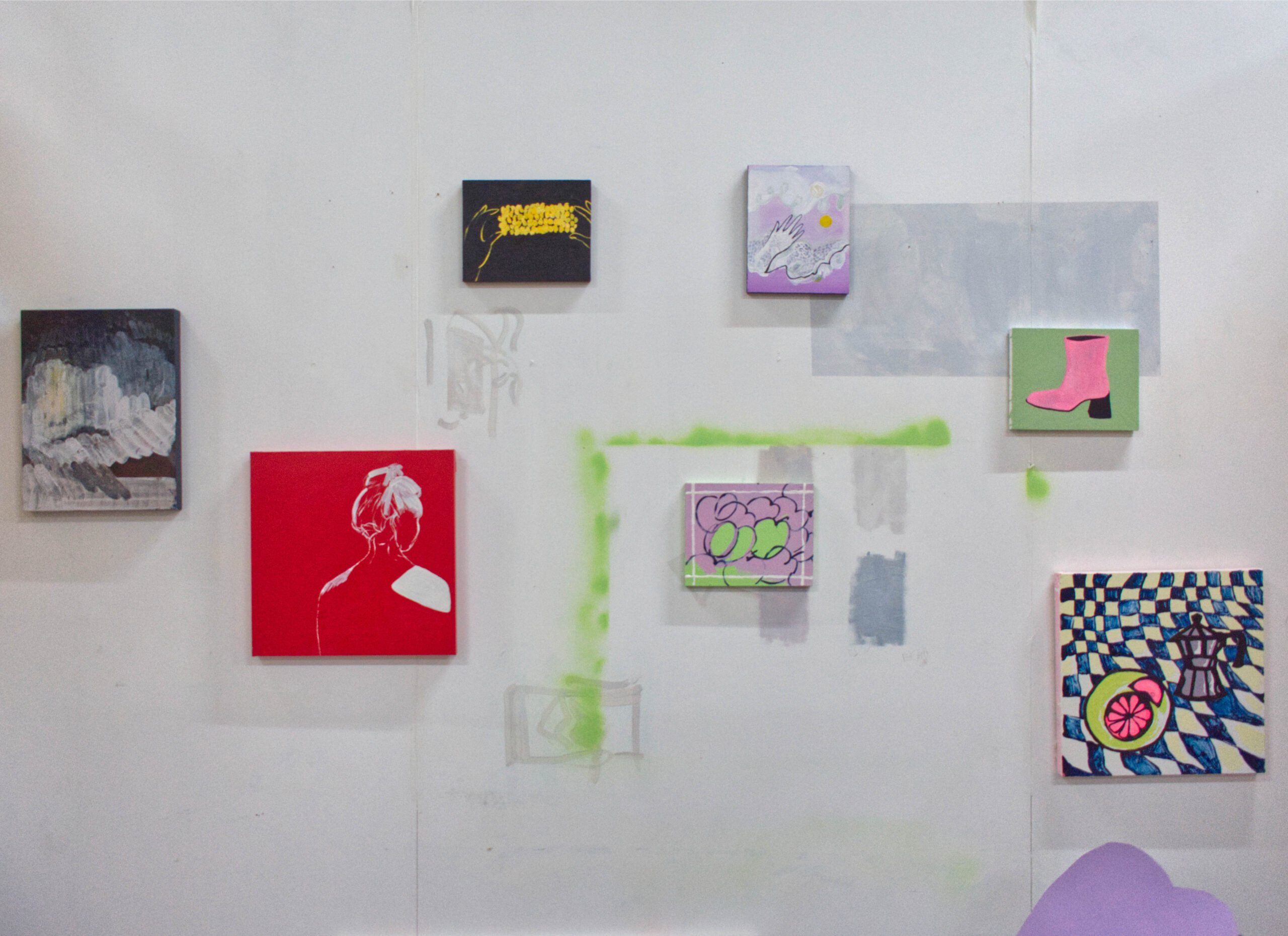
Helayna: Have you got any current projects you’re working on, planning or have recently finished?
Lucy: Well, as always I’m trying to try to do more paintings and trying to make them better. I’m in that whole cycle of making. I think I want to increase the volume and create different variations of this one image that I’ve been working on. I want to work my discipline, to not just switch from one point of interest to another and see how far I can develop one motif.
I’m featured in the ‘Refractive Pool: Contemporary painting’ book, which is now on sale, which was set up by Josie Jenkins and Brendan Lyons. There’s also going to be a follow up exhibition in the Walker Gallery from the 29 Apr 2022—08 Jan 2023. It was an interesting concept of having artists make their own portraits and some really exciting work was made.
Helayna: Thank you for speaking with me, it was lovely getting to know what you do and how you create.
Be sure to keep up to date with Lucy and her wonderful work by checking out her website and Instagram, here!
Filed under: Art & Photography
Tagged with: art, collaboration, covid, exhibition, experiment, femininity, food, interiors, mark making, painting, still life, studios

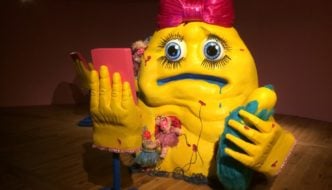
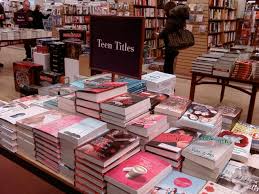
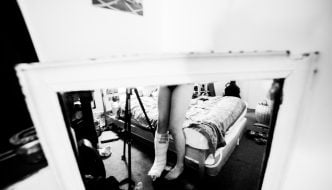
Comments